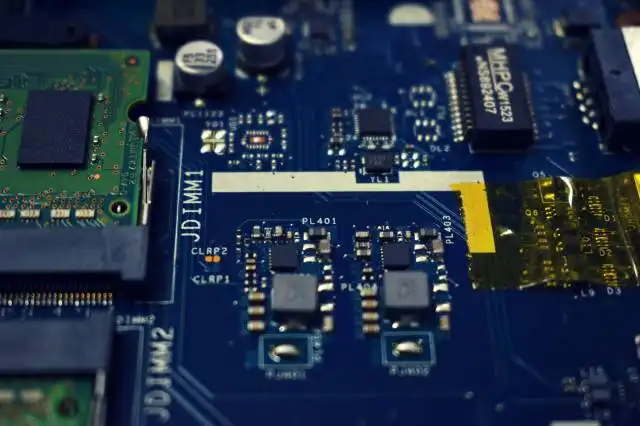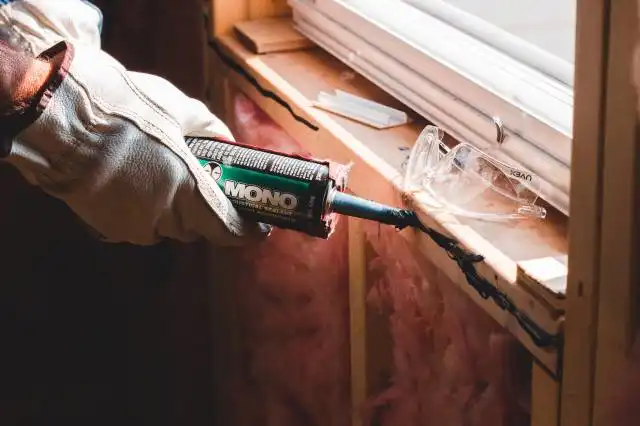Start a Screen Repair Business
Turn Clumsiness into Opportunity: Launch Your Own Screen Repair Business
| Updated


SCREEN REPAIR BUSINESS
Are you looking to capitalize on people's occasional clumsiness? A screen repair business might be the perfect entrepreneurial venture for you. Whether it's smartphones, laptops, or tablets, screens tend to crack or damage, even under the most careful hands. Your business will bring relief to tech users by restoring their devices to their original glory, making their viewing experience smooth and delightful. Get those nimble fingers ready to handle some delicate electronics!
Jump to Business Plan
RELATED BUSINESS IDEAS
Browse ALL Internet & Technology Startups Business Ideas
Discover Your Perfect Domain
Unlock the door to your online success with our hand-picked selection of premium domain names. Whether you're starting a new venture or rebranding an existing one, the right domain can set the tone for your digital presence. Browse through our curated list, each with its unique potential to enhance your brand's visibility and credibility.
SCREEN REPAIR MINI BUSINESS PLAN
This a quick reality check to help you identify the strengths and weaknesses of your business concept before you dive in.
Expected Percent Margin:
- Gross Margin: Approximately 60-80%
- Net Profit Margin: 20-30%
Earnings Expectations:
- Daily Earnings: Expect $150 - $400
- Weekly Earnings: Expect $1,050 - $2,800
- Monthly Earnings: Expect $4,500 - $12,000
- Annual Earnings: Expect $54,000 - $144,000
Actions Needed:
Supply Management:
- Initial Inventory: Anticipate investing $2,000 to $5,000 to stock essential screen repair parts.
- Partnerships: Establish contracts with dependable supply dealers.
Marketing and Growth:
- Digital Marketing: Be active on popular social media channels, post ongoing campaigns at least 2-3 times per week.
- Local Advertising: Dedicate roughly $200 - $500 per month towards local marketing efforts. This could include flyers, local newspaper ads, or event sponsorships.
Sales and Customer Satisfaction:
- Staffing Requirements: 1-2 technicians trained in screen repair skills should suffice when starting.
- Customer Service Strategy: Provide top notch customer experience to encourage repeat business and referrals.
Expense Control:
- Rent: Find a location where rent does not exceed 15% of expected monthly turnover.
- Overhead Costs: Anticipate allocating $300-$700 monthly for utilities and general maintenance.
Business Operations:
- Operating Hours: Aim to stay open 5-6 days a week, roughly 7-9 hours a day.
- Transactions: Depending on your pricing, target about 5-10 successful repairs per day.
Remember, these projections are approximations based on common industry standards. Results can fluctuate based on your geographical area, your skills and experience, and economic variables. You should always seek advice from an experienced financial consultant for business decisions.
NOT WHAT YOU HAD IN MIND? Here are more ideas



Browse ALL Internet & Technology Startups Business Ideas
Grab Your Business Website Name
Before you get caught up in the whirlwind of setting up your business, invest in a domain name. It's a small but significant step that lays the foundation for your brand and makes it easier for customers to find and trust you. Just like you wouldn't build a house without securing the land first, don't build a business without securing your domain name.
"Why? Can't that wait?" Here's why it shouldn't
Step One: Determine if Starting a Screen Repair Business is Right for You
Breakdown of Startup Expenses
Before you begin your business, it is important to understand the costs associated with starting a screen repair business. This includes the cost of equipment, such as tools, parts, and supplies, as well as any licensing or permits you may need. You will also need to factor in the cost of advertising and marketing, as well as any legal or accounting fees. Additionally, you may need to purchase insurance to protect your business from potential liabilities.
Breakdown of Ongoing Expenses
Once you have established your business, you will need to consider the ongoing costs associated with running it. This includes the cost of supplies, such as parts and tools, as well as the cost of advertising and marketing. You will also need to factor in the cost of labor, such as any employees you may hire, as well as any subcontractors you may need. Additionally, you will need to consider the cost of insurance, taxes, and any other fees associated with running a business.
Examples of Ways to Make Money
There are several ways to make money in the screen repair business. One way is to offer repair services to individuals and businesses. This could include repairing broken screens, replacing cracked screens, or installing protective covers. Additionally, you could offer installation services for new screens or accessories. You could also offer maintenance services, such as cleaning and polishing screens, or providing protective coatings. Finally, you could also offer customization services, such as engraving or adding logos to screens.
Step Two: Naming the Business
When it comes to naming a business, it is important to choose a name that is memorable and reflects the services that the business offers. It is also important to consider the domain name and whether it is available. Additionally, it is important to consider if the name is trademarked or if it is too similar to another business. It is also important to consider if the name is easy to spell and pronounce, as this will make it easier for customers to find the business.
When choosing a name, it is important to brainstorm and come up with a few different options. It is also important to consider the target audience and what type of name would appeal to them. Additionally, it is important to consider the mission of the business and how the name reflects that. Finally, it is important to consider the future of the business and how the name can be adapted to fit any potential changes.
Step Three: Obtain Necessary Licenses and Permits
Before starting a screen repair business, it is important to obtain the necessary licenses and permits. Depending on the location, there may be different requirements for businesses. Generally, businesses need to register with the local government and obtain a business license. Additionally, some states may require a sales tax permit or a special license for certain types of businesses. It is important to research the specific requirements for the area in which the business will be located.
Furthermore, it is important to research the local zoning laws to ensure the business is in compliance with the local regulations. Additionally, some areas may require a special permit for a business to operate in a certain area. It is important to research the local laws to ensure the business is in compliance.
Moreover, it is important to research any special requirements for the type of business. For example, some states may require special licenses for businesses that repair electronic devices. Additionally, some states may require a special permit for businesses that work with hazardous materials. It is important to research the specific requirements for the type of business.
Finally, it is important to research any special requirements for the type of business. For example, some states may require special licenses for businesses that repair electronic devices. Additionally, some states may require a special permit for businesses that work with hazardous materials. It is important to research the specific requirements for the type of business to ensure the business is in compliance with local laws.
Step Four: Find a Suitable Location
Finding a suitable location for a screen repair business is essential for success. The ideal location should have good visibility, be accessible to customers, and have enough space to accommodate the necessary equipment and supplies. Additionally, the location should have enough space to accommodate customers who may need to wait while their device is being repaired. When selecting a location, it is important to consider the cost of rent, utilities, and other expenses associated with the property. Additionally, it is important to research the local zoning laws to ensure that the business is in compliance with all regulations. Finally, it is important to consider the local competition and how the location may affect the business’s ability to attract customers.
Step Five: Purchase Necessary Equipment and Supplies
Once you have determined the type of business you want to start, you will need to purchase the necessary equipment and supplies. This will include things like a computer, printer, phone, tools, and other items that you will need to repair screens. You may also need to purchase a few parts, such as glass, adhesive, and other materials. Additionally, you will need to purchase any software that you will need to help you diagnose and repair screens. It is important to research the different types of equipment and supplies that are available and to purchase the best quality items that you can afford. Be sure to factor in the cost of shipping and taxes when making your purchases. Additionally, you may want to purchase a few extra parts and tools in case something breaks or malfunctions.
Step Six: Market Your Business
Once you have your business up and running, it is important to get the word out. There are many ways to market your business, including:
Social Media: Utilizing social media platforms, such as Facebook, Twitter, and Instagram, can be a great way to reach potential customers. You can create posts about your services, post pictures of your work, and even offer discounts or promotions to draw in new customers.
Word of Mouth: Word of mouth is one of the most powerful forms of marketing. Ask your friends and family to spread the word about your business. You can also offer discounts or incentives to customers who refer your business to others.
Local Advertising: Local newspapers, radio, and television are all great ways to reach potential customers. You can also create flyers and distribute them in your local area.
Online Advertising: You can also advertise your business online. You can create ads on search engines, such as Google and Bing, or you can create ads on social media platforms.
Networking: Networking is another great way to market your business. You can attend local business events and meet other business owners who may be interested in your services. You can also join local business groups and participate in online forums to get your business noticed.
Step Seven: Hire Employees
Hiring employees is an important step in starting a screen repair business. It is important to hire the right people who have the skills and knowledge to help the business succeed. The first step is to determine the number of employees needed. This will depend on the size of the business and the services offered. Once the number of employees is determined, the next step is to create job descriptions and post them in the local area. This will help to attract the right people for the job. It is also important to consider the cost of hiring employees, such as wages, benefits, and other associated costs. Finally, it is important to conduct background checks and interviews to ensure that the right people are hired for the job.
Step Eight: Set Up Accounting and Bookkeeping System
Setting up an accounting and bookkeeping system is essential for any business. It helps to track income and expenses, and it also helps to ensure that taxes are paid on time. It is important to choose an accounting system that is easy to use and that can be updated regularly. An accountant or bookkeeper should be consulted to ensure that the system is set up correctly.
When setting up the accounting system, it is important to create a chart of accounts that will be used to track income and expenses. This chart should include categories such as materials, labor, overhead, and taxes. It is also important to set up a system for tracking payments from customers and payments to vendors. This system should include the ability to track payments by customer, payment type, and payment date.
It is also important to set up a system for tracking inventory. This system should include the ability to track the quantity of inventory on hand, the cost of inventory, and the value of inventory. This system should also be able to track the sale of inventory and the cost of goods sold.
Finally, it is important to set up a system for tracking taxes. This system should include the ability to track income taxes, sales taxes, and payroll taxes. It should also be able to track estimated taxes and any other taxes that may be applicable to the business. This system should be updated regularly to ensure that all taxes are paid on time.
Step Nine: Create a Business Plan
Creating a business plan is the final step in starting a screen repair business. A business plan is a document that outlines the goals and objectives of the business, as well as the strategies and tactics that will be used to achieve them. It should also include a financial forecast, which will help to determine the amount of capital needed to start the business and the expected return on investment. The plan should also include a marketing strategy, which will help to determine how to reach potential customers and how to differentiate the business from competitors. Additionally, the business plan should include a description of the services offered, the target market, and the pricing structure. Finally, the plan should include a timeline for achieving the goals and objectives of the business.
EXPLORE MORE CATEGORIES
Browse ALL Business Idea Categories
TAKE THE NEXT STEPS










